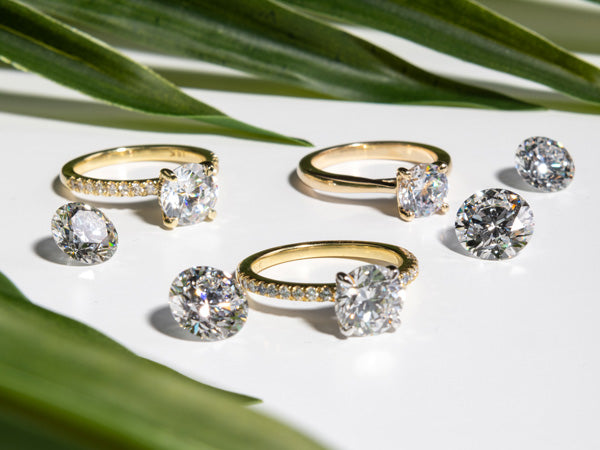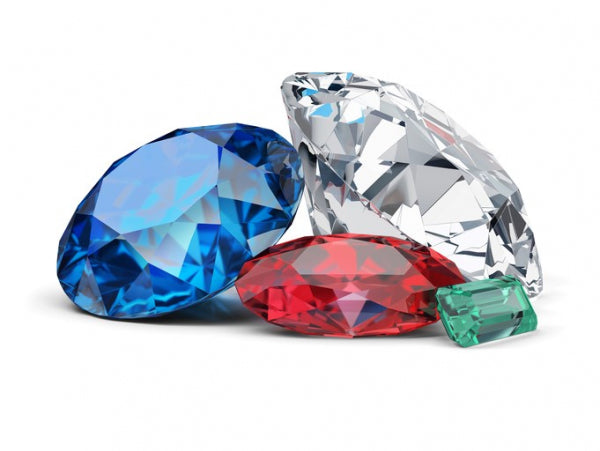Introduction: What Makes Lab Diamonds Special?
Ever wondered why lab diamonds are becoming the go-to choice for many people? Let’s dive into the world of lab-grown diamonds and discover what makes them so special. Lab diamonds are real diamonds, created in a lab rather than dug up from the earth. They offer a perfect blend of beauty, affordability, and ethical appeal that’s hard to beat.
What Are Lab Diamonds?
Lab diamonds, also known as synthetic diamonds or cultured diamonds, are created in controlled environments using advanced technology. Unlike natural diamonds, which form over billions of years under intense heat and pressure lab diamonds are forever, lab diamonds are made in a matter of weeks.
How Are Lab Diamonds Made?
Lab diamonds are created through two main methods: High Pressure High Temperature (HPHT) and Chemical Vapor Deposition (CVD). The HPHT method mimics the natural diamond-forming process, while CVD uses a carbon-rich gas to grow diamond crystals on a substrate. Both methods produce diamonds that are chemically, physically, and optically identical to natural diamonds.
The Rise of Lab Diamonds: A Historical Perspective
Lab diamonds have a fascinating history that’s worth exploring. From their early beginnings to the thriving industry we see today, lab diamonds have come a long way.
Early Beginnings: The Birth of Synthetic Diamonds
The concept of creating synthetic diamonds dates back to the 1950s. Early attempts to make diamonds were met with skepticism, but as technology advanced, the idea of lab-grown diamonds began to take shape.
The Modern Lab Diamond Industry
Fast forward to the 21st century, and lab diamonds are a significant part of the jewelry market. Advances in technology and increasing consumer demand have transformed lab diamonds from a niche product to a mainstream choice for engagement rings, earrings, and more.
Why Choose Lab Diamonds?
So, why are more people choosing lab diamonds over natural ones? Let’s explore the reasons behind this shift.
Affordability Without Compromise
One of the biggest advantages of lab diamonds is their affordability. Lab diamonds can cost 30-50% less than their natural counterparts, making them a great option for those looking to get more sparkle for their buck.
Environmental and Ethical Benefits
A Greener Choice
Lab diamonds are an environmentally friendly option. Traditional diamond mining can cause significant environmental damage, but lab diamonds have a much smaller carbon footprint.
Ethics Behind Lab Diamonds
Lab diamonds also offer an ethical alternative to natural diamonds. They are free from the “blood diamond” controversy, which is associated with human rights abuses in some diamond mining regions.
Lab Diamonds vs. Natural Diamonds: The Big Debate
The debate between lab diamonds and natural diamonds is ongoing. Let’s break down the key differences.
Physical and Chemical Differences
At the atomic level, there’s no difference between lab diamonds and natural diamonds. Both have the same physical properties, including hardness and brilliance. The only real difference is their origin.
Price Comparison: Lab Diamonds vs. Natural Diamonds
Lab diamonds are generally more affordable than natural diamonds. This price difference makes lab diamonds a compelling choice for budget-conscious buyers.
Lab created diamonds are gemstones that replicate the same physical and chemical properties as natural diamonds but are grown in a controlled environment.
Applications of Lab Diamonds
Lab diamonds are not just for jewelry. They have a variety of uses that go beyond the sparkle.
Conclusion: The Timeless Appeal of Lab Diamonds
In conclusion, lab diamonds are not just a trend—they’re here to stay. With their affordability, ethical benefits, and stunning beauty, lab diamonds offer a modern take on a timeless gem. Whether you’re buying an engagement ring or just adding to your jewelry collection, lab diamonds are a fantastic choice. They prove that you don’t have to sacrifice quality or ethics for beauty.








